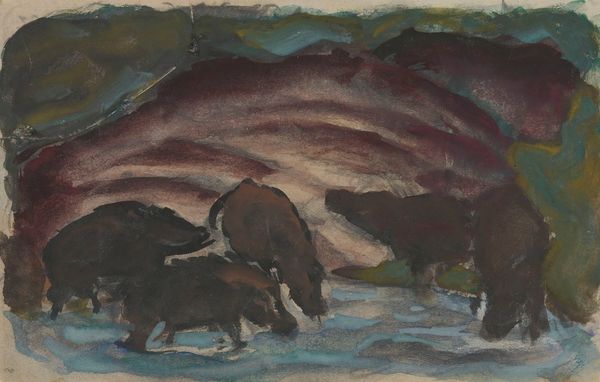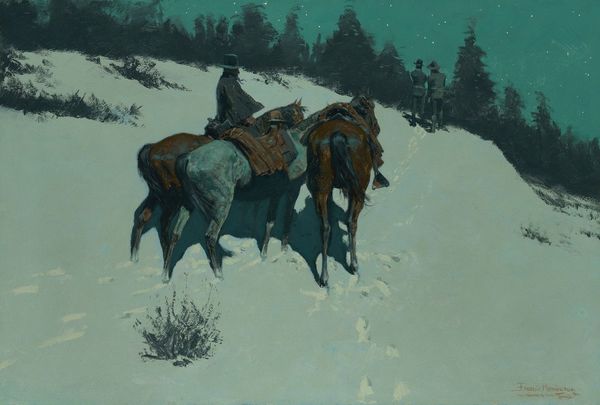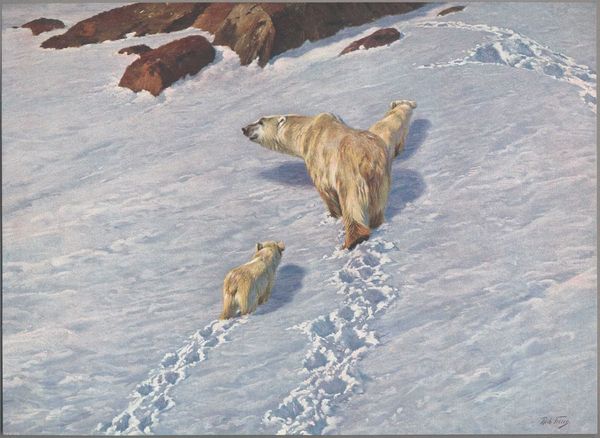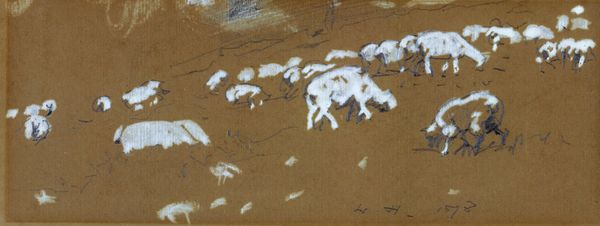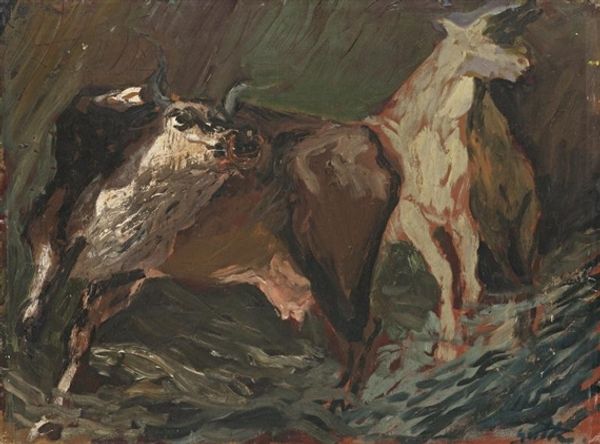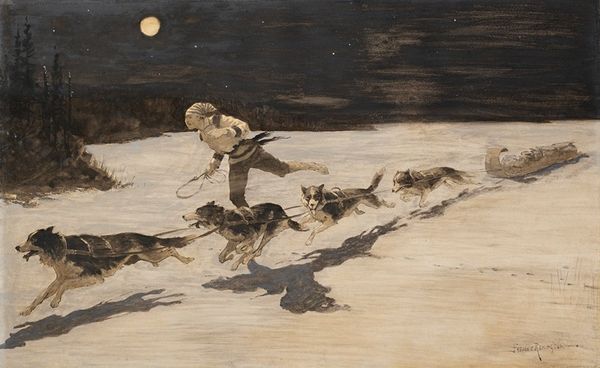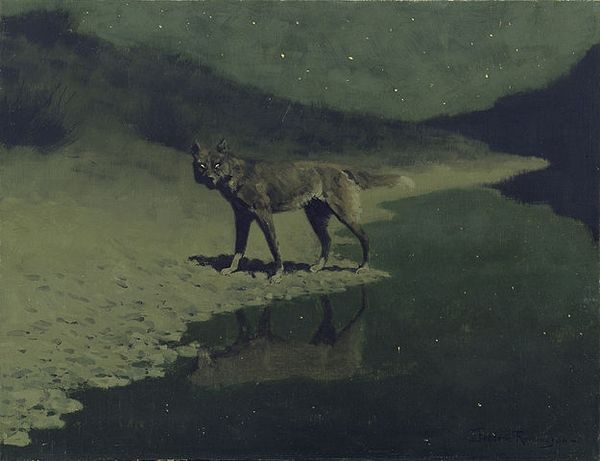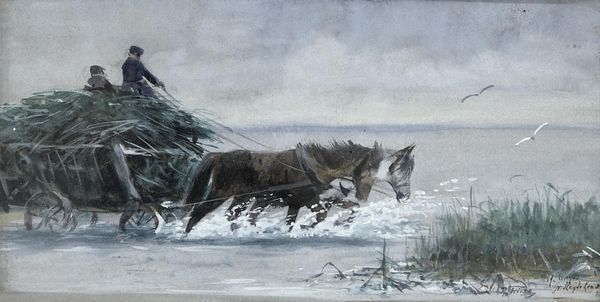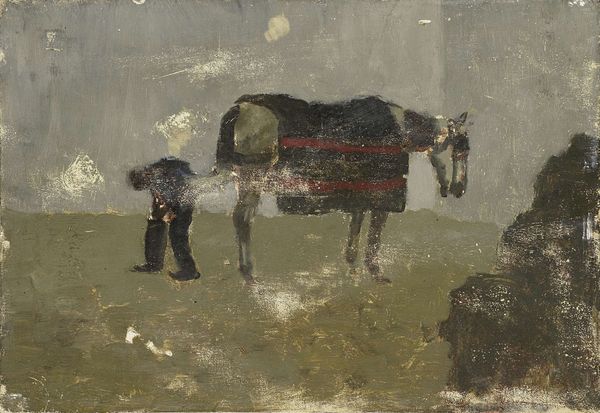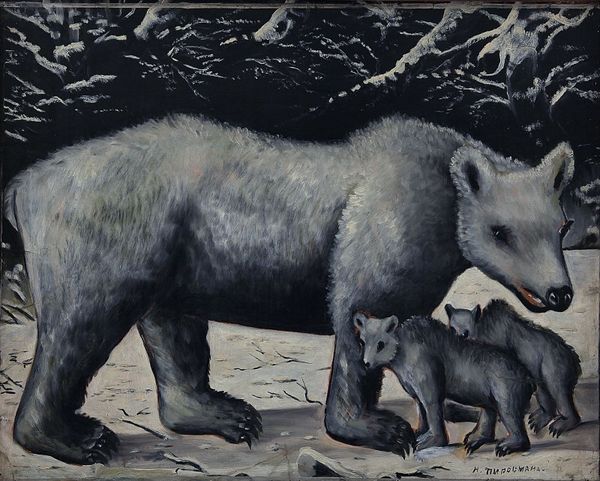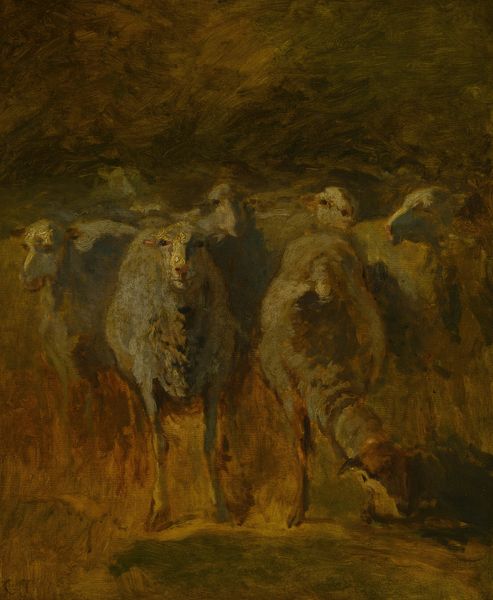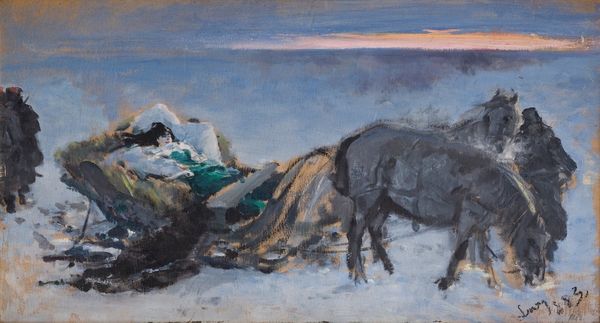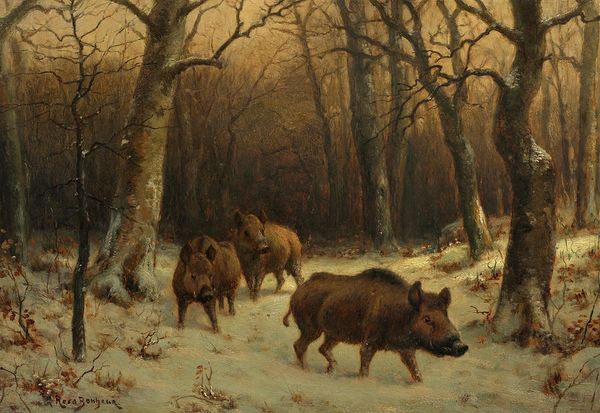
Copyright: Public Domain: Artvee
Curator: This is Frederic Remington’s oil on canvas painting, “The Call for Help,” likely completed between 1906 and 1910. It depicts horses corralled against a snowy backdrop, with two dogs barking at them. Editor: My first thought? Isolation. That stark, snow-covered ground almost feels oppressive, and the dark, undefined masses of the horses create a sense of unease. The only relief is that lone, warm light coming from the cabin behind them. Curator: The high-key palette, which favors those brighter tints of white and muted greens and browns, suggests more of a feeling of resignation and stillness than outright oppression. Though it could be argued that this stillness only punctuates their being cut off from external elements and a need for civilization or companionship. But what are we to read of those vertical strokes indicating falling snow, as it obscures the backdrop of the stable? What affect and narrative are communicated by this use of form? Editor: Good points. Contextually, Remington, while often painting scenes of Western adventure, also did portray the vulnerabilities inherent in frontier life. Horses, of course, represented the quintessential labor of people from colonizer descent that facilitated resource extraction from Indigenous lands. To have these symbols "trapped," alongside their companions, underscores a dependence that could turn tragic out in that harsh landscape. Was the artist making an explicit social commentary here? Curator: Possibly, though it seems the dynamic structure is organized via opposing forces: those warm, inviting—if dim—horizontal cabin structures placed in opposition to the wilder natural landscape surrounding. What about the canines? This brings us back to formalism, though the material depiction isn't what matters, only the relational juxtaposition between forms, right? Do we focus then, on the line created by the two smaller dogs, barking up into the night as a form of contrast? Editor: I suppose you could say the composition relies heavily on contrasts: warm vs cold, tamed vs. wild, light vs shadow... What fascinates me, though, is the possible underlying narrative—a subtle questioning of progress and the myth of self-reliance in the American West, one tinged with a cold reality. Curator: An interesting note to end on! Editor: Agreed. The painting provides multiple opportunities for discourse across technique and symbolic content, as you observed!
Comments
No comments
Be the first to comment and join the conversation on the ultimate creative platform.
